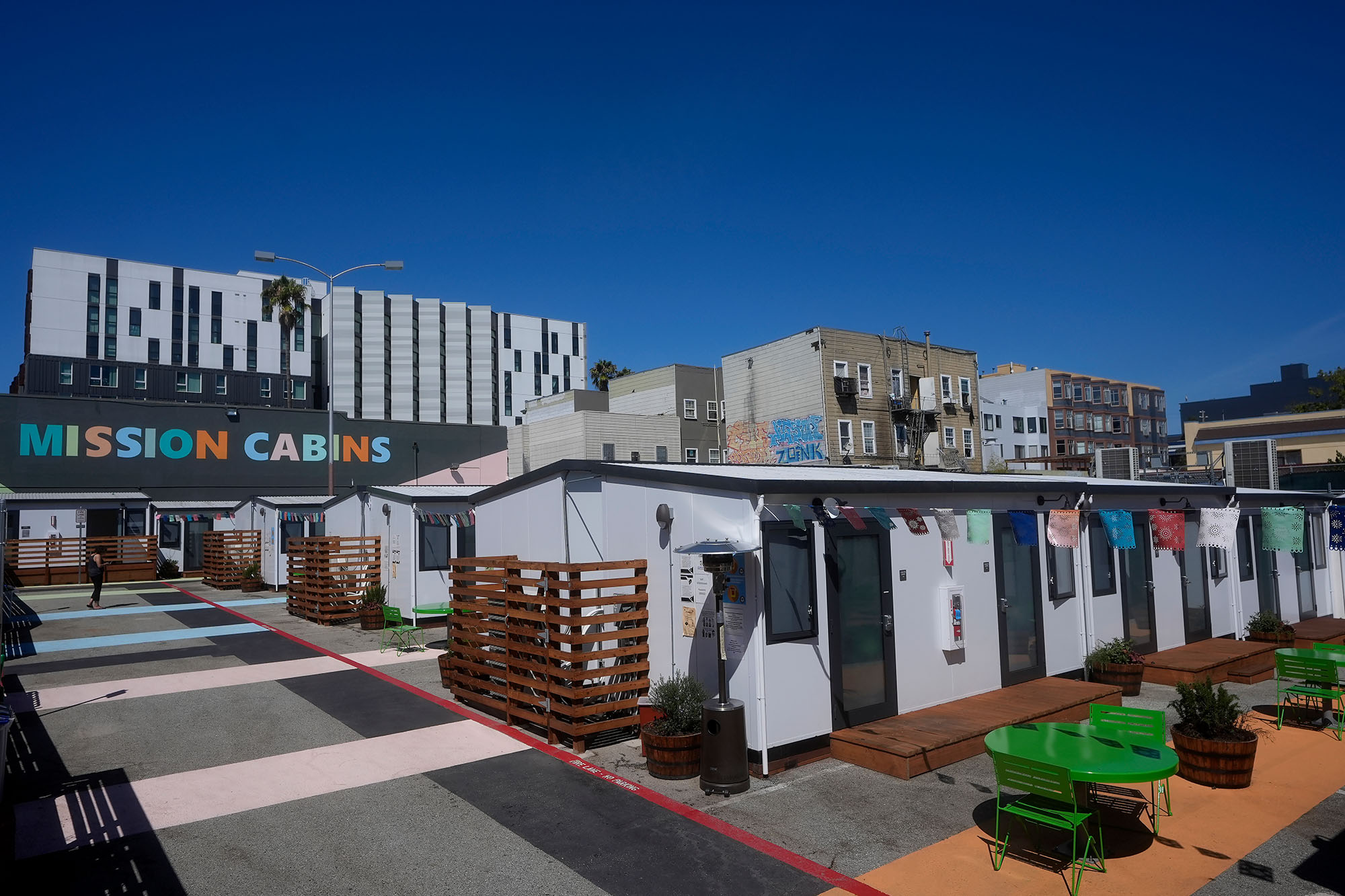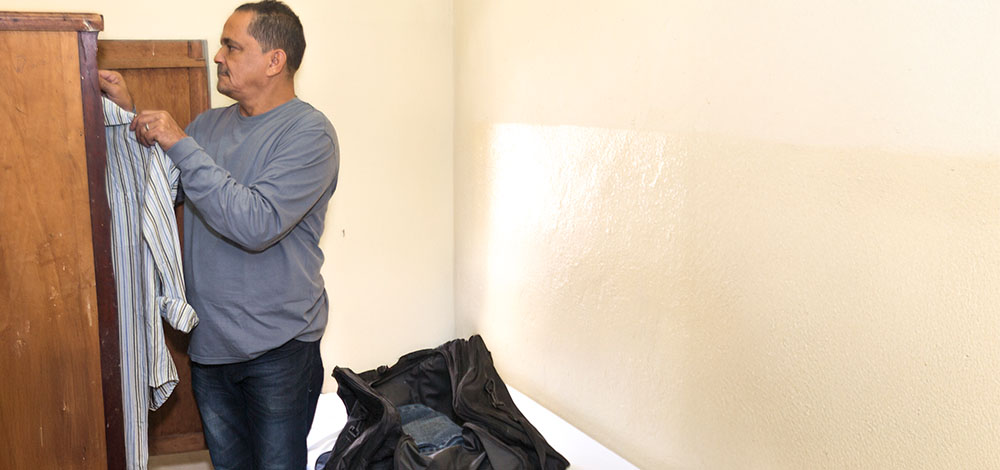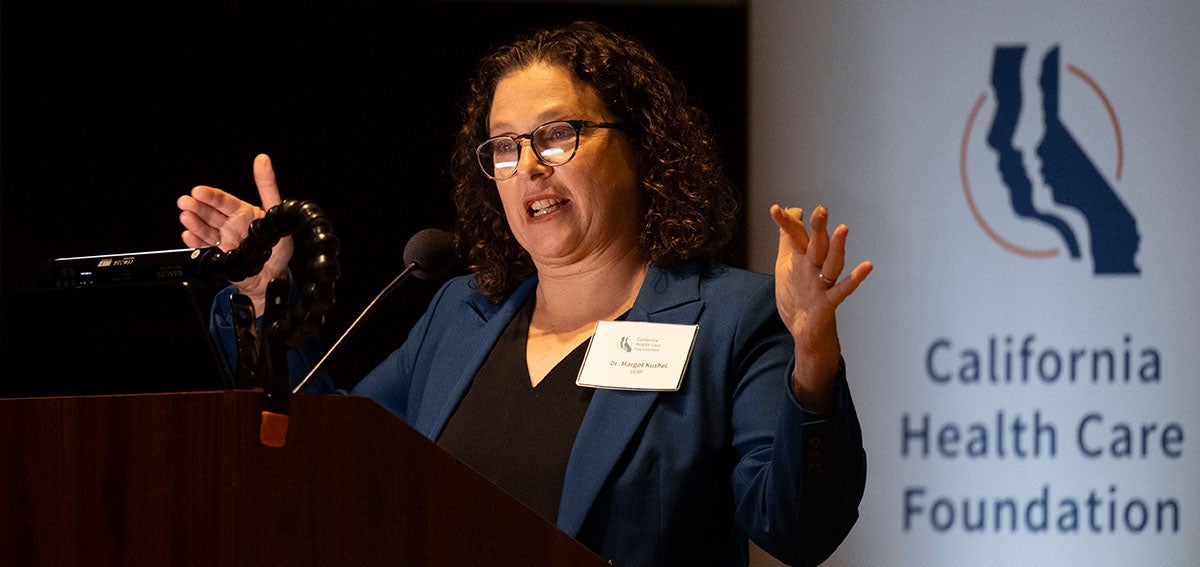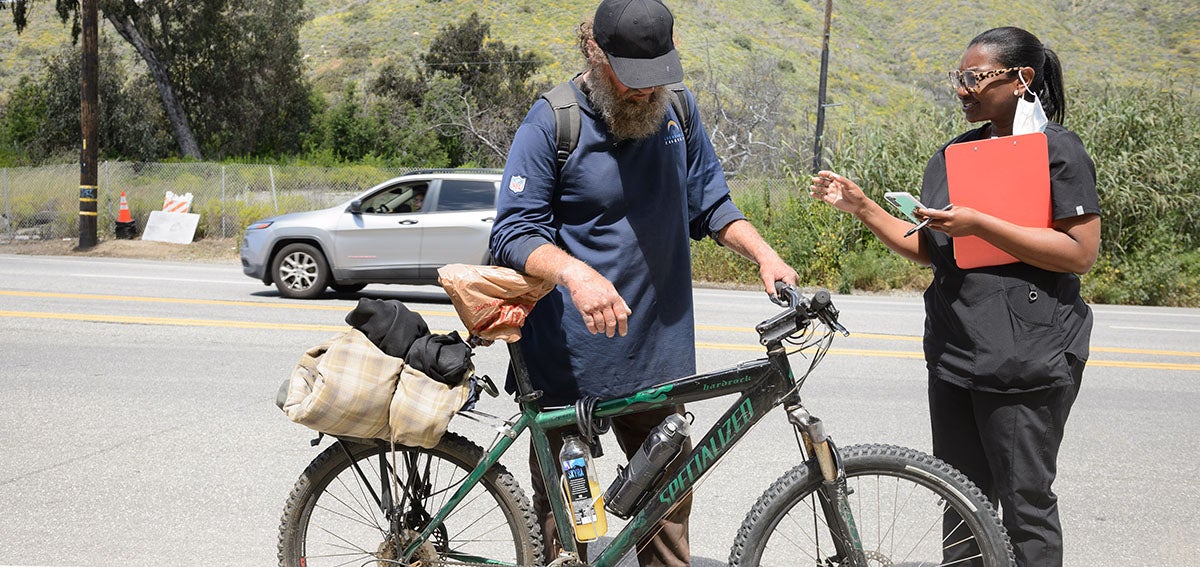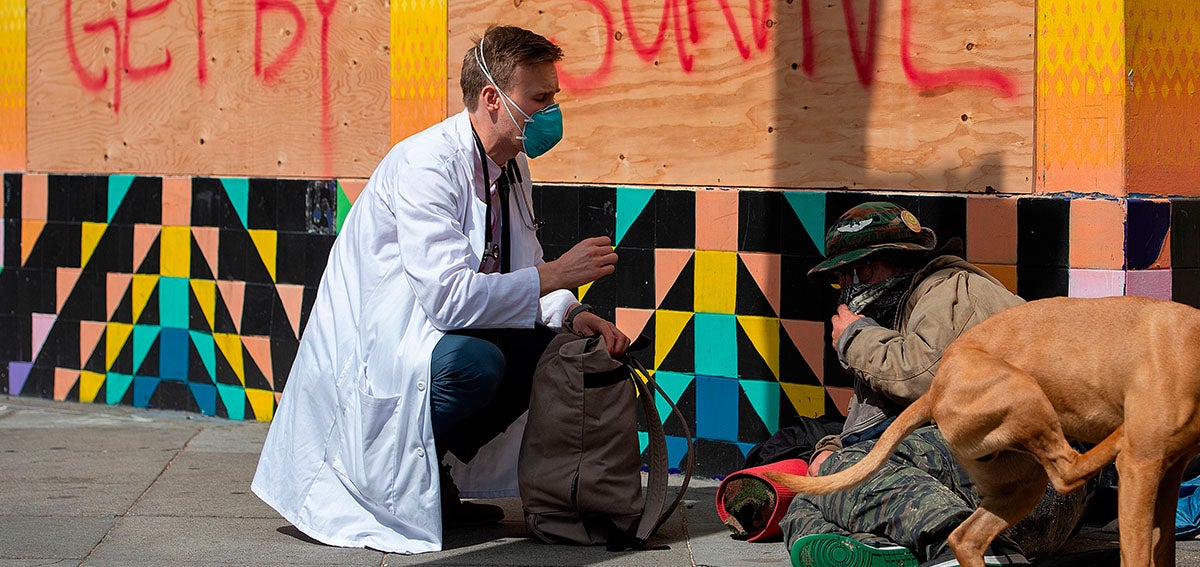
COVID-19 has disrupted our lives in ways that were previously unimaginable. Millions of Americans are trying to comply with advice to stay home and avoid physical proximity to others. As many have learned, sheltering in place is hard. Imagine what it’s like for someone living on the streets.
For more than 150,000 people experiencing homelessness (PDF) in California, complying with physical distancing and shelter-in-place orders is all but impossible.
Compounding the problem, people experiencing homelessness live with a higher incidence of chronic medical and behavioral health conditions than the general population, and they die, on average, 20 years younger than people who are housed. Studies have shown that up to one-third of them have lung disease, compared with 10% of the general population. Similar disparities exist with heart disease, diabetes, and other conditions that elevate risk for severe complications from infections. Furthermore, many homeless people exhibit premature conditions of aging, including early cognitive decline.
California must meet the needs of this population with a comprehensive, coordinated, and well-resourced response. For CHCF, addressing this challenge is a top priority. CHCF has been developing a new body of work to improve health care in tandem with social services for people experiencing homelessness. Now COVID-19 has put our work on a fast track. We are quickly learning how best to support frontline partners and the people they care for in a fast-moving global crisis unlike anything most of us have lived through before.
Two Public Health Crises Converge
Before COVID-19, homelessness was the biggest, most visible epidemic in California and many US cities. But now two public health crises are merging. In March, researchers at the UCLA Fielding School of Public Health estimated that 21,000 people experiencing homelessness nationwide could need to be hospitalized because of COVID-19. In California, they projected as many as 1,200 could die.
People experiencing homelessness disproportionately live in congregate settings, such as shelters and homeless encampments, which accelerates viral transmission. In only four days, the number of coronavirus infections at one San Francisco homeless shelter multiplied from 5 to 92. In addition, the most vulnerable people — those who are chronically unsheltered — often live alone and out of sight. If they contract the coronavirus and become ill, they are likely to suffer alone or die on the streets.
This month California became the first state to gain Federal Emergency Management Agency (FEMA) approval for up to 75% federal cost-share reimbursement for hotel and motel rooms. Governor Gavin Newsom’s “Project Roomkey” aims to secure 15,000 rooms to shelter and isolate the most vulnerable people experiencing homelessness and provide meals, security, and custodial services. The state also procured more than 1,300 trailers from FEMA and private vendors to house individuals under quarantine orders.
Nonprofits, county governments, and philanthropic organizations have partnered with cities to identify, triage, isolate, and manage homeless people infected or at high risk for infection. Regardless of the setting, this work is logistically challenging and expensive. Services are more easily delivered in shelters because sleeping, care, and social services can be colocated. It is more difficult to provide care and services to people isolated in rooms scattered across communities. In those situations, counties must dispatch meals and security and cleaning crews to many different locations. The same is true for clinical staff caring for patients’ COVID-related needs along with preexisting physical and mental health needs and substance use disorders.
As cities and counties scramble to gain access to federal and state funds, they generally are on the hook for up-front expenses. Most jurisdictions have focused their limited resources on symptomatic people, those with known exposure to the coronavirus, and people at high risk because of age or chronic illness.
Boston Learns to Test Everyone
Boston’s experience holds important lessons for California’s approach to managing COVID-19 risk in shelters. When a person who had been staying at a shelter there was hospitalized with the disease, the local Health Care for the Homeless team decided to test all shelter occupants, and the results were unexpected. Of the 397 in the group, 146 tested positive — and not one was symptomatic. Before that discovery, the team had been making decisions about isolation based on clinical screening for symptoms and fever. Public health experts are realizing that people who don’t even know they’re infected may be responsible for a significant share of all coronavirus transmission. Testing revealed that pursuing a symptom-driven approach is a mistake, and now they are planning routine testing of everyone at local shelters.
For many California counties and cities, the most practical environment in which to house homeless people during the COVID-19 crisis has been in congregate settings. We must figure out how to deploy universal and rapid testing within those spaces and put in place the infrastructure to quickly move those who test positive into quarantine.
Taking Care to the Street
People in street encampments or living in vehicles could fare better if supported with hygiene stations, meals, and care from outreach workers and clinical staff. Tents and vehicles can be situated to allow for physical distancing, while not disrupting important preexisting social networks among residents and allowing outreach workers to perform well checks.
In Los Angeles, the Department of Veterans Affairs has set up a small tent city with care and services. The LA City Council is considering following suit in beachfront parking lots that have been closed to prevent beach crowding. Other communities have taken a similar approach with their available safe parking areas. We should watch these rapid-response experiments closely and learn from them.
These adaptations are certainly not a long-term solution to the homelessness or COVID-19 crises. But they can give already stretched systems time to adapt, improve, and pivot toward more permanent placements. There are creative, responsive, and human-centered solutions to be tested, improved, and replicated to improve the care we deliver to the most vulnerable unsheltered individuals.
The Role of Philanthropy
Philanthropy has a critical role to play in supporting progressive approaches to serving people experiencing homelessness. CHCF will use the next 12 months to learn more about how health systems identify homeless people and about how these systems share data with county and nonprofit homeless service providers to better coordinate care and services. We want to understand what health systems need to provide more responsive, comprehensive care and crisis services. We will be convening a learning collaborative to connect service providers, administrators, and payers trying to improve health care for people in need of shelter.
COVID-19 is forcing California to pursue public health measures on a scale never seen before. In the end, the infrastructure and relationships built to diminish the effects of COVID-19 on people experiencing homelessness may lead to solutions for not just one crisis, but two.
Authors & Contributors


